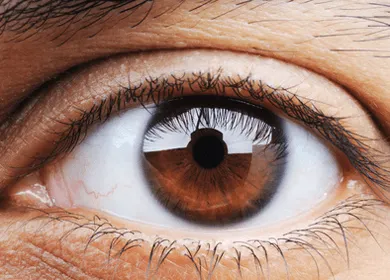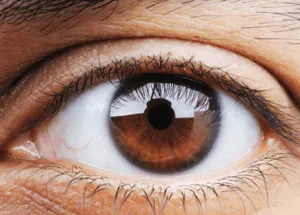
- Share on Facebook87
- Share on Pinterest
- Share on Twitter
Iridology is the holistic study of the iris of the eye, in which all parts and organs of the body are mapped out as relating to a specific section of the iris. An abnormality or discoloration in a specific section of the eye can help identify trouble in the relating region of the body. While iridology has long been seen as a pseudoscience by the Western world, more and more medical and naturopathic practitioners are beginning to recognize its inherent value.
Iridology uses a chart that has been continually improved upon and updated since the 1800’s to map which organ or body system relates to which part of the iris. A lens magnifying the eye between 4 and 50 times is used to analyze the eye and identify potential issues. While this is an intricate and specialized science, some health problems can be recognized at home just by studying our eyes closely in the mirror.
According to Andrew Iwach, the associate clinical professor of ophthalmology at the University of California, San Francisco, eyes are, “the only place in the body where you can see a bare nerve, a bare artery, and a bare vein without doing any cutting. And the disease processes we see occurring in the eye are probably occurring in the rest of the body.”
Indeed, signs of diseases such as cancer, HIV, aneurysms, diabetes mellitus, cardiovascular disease and rare hereditary disorders can often be spotted in the eye before symptoms appear. For this reason, many ophthalmologists recommend that everyone have a comprehensive eye exam before they turn 40.
As many health issues can obviously appear before a person turns 40, it is important to routinely check your eyes at home for a certain risk factors.
 For instance, bulging eyes, while in some cases hereditary and not symptomatic of a health issue, are sometimes a sign of thyroid diseases, such as Grave’s disease.
For instance, bulging eyes, while in some cases hereditary and not symptomatic of a health issue, are sometimes a sign of thyroid diseases, such as Grave’s disease.
- When the outer third of the eyebrow disappears or trails off, it can also indicate thyroid problems.
- Yellow in the parts of the eyes which are normally white can indicate liver dysfunction.
- Bloody eyes not caused by trauma can sometimes indicate severely high blood pressure or a clotting disorder.
- Differently sized pupils and droopy eyelids not caused by aging can be the first signs of serious neurological conditions such as strokes, brain tumors or multiple sclerosis (MS).
- Finally, it is crucial to be aware that sudden dim vision, double vision, and loss of vision are the warning signals of an oncoming stroke.
The earlier a health problem is spotted, the sooner the underlying problem can be discovered and the correct treatment plan formulated and applied. Early detection of weak or malfunctioning body systems minimizes the necessity for the intervention of invasive medical procedures. While in some cases, for example a stroke, medical intervention may be necessary and life-saving, in many other cases, spotting a problem in the eye first may allow a natural treatment plan to be put into place as soon as possible, getting you on the road to a healthier life much quicker than if you waited for further symptoms to appear.
Along with self-examination, a trip to an iridologist may bring to light many issues which may otherwise have remained hidden for a very long time.
-The Alternative Daily
Sources:
http://www.webmd.com/eye-health/features/what-your-eyes-say-about-your-health
http://articles.mercola.com/sites/articles/archive/2011/03/01/14-things-your-eyes-say-about-your-health.aspx
http://www.healingwithiridology.com/
- Share on Facebook87
- Share on Pinterest
- Share on Twitter

